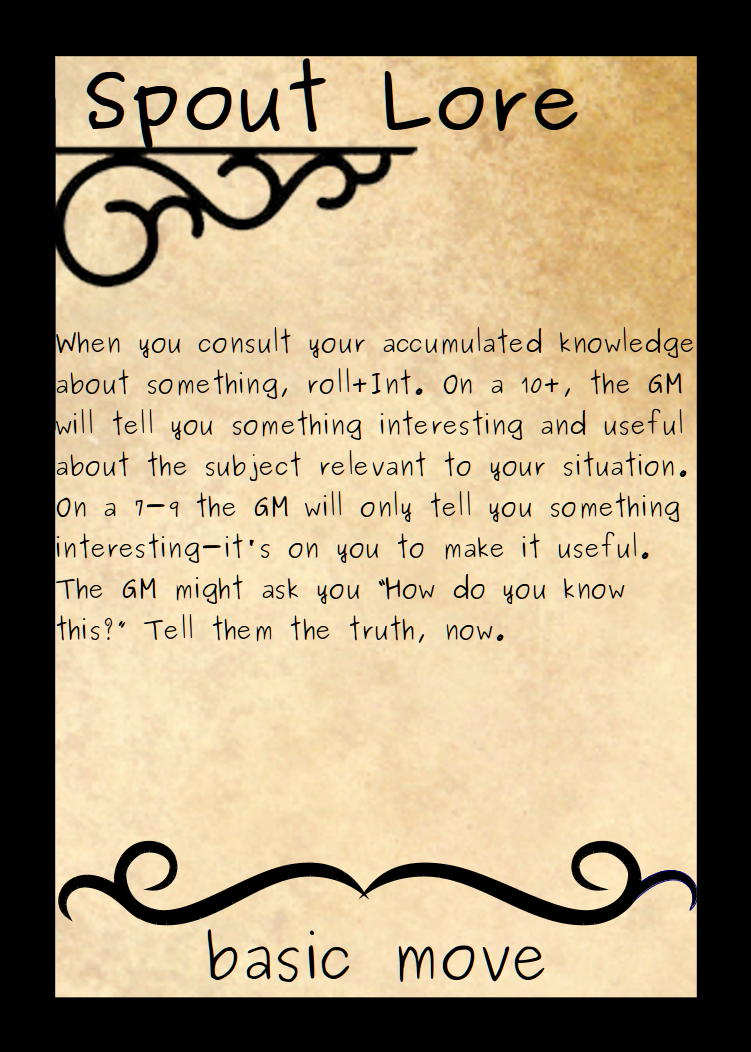so, i only got into this game like a week ago, but i am wicked excited to play. i don’t think i’ve been this pumped about a game since i first discovered d&d back in like elementary school. anyways, i got to thinking that it’d be nice to have some handy dandy cards to give to my players to remind them of the moves. here’s the design i’m working on so far so far. considering i’ve got approximately zero experience in graphic art, i am pretty darn proud of them.
(the card back on the left, and the face on the right.)
would anyone else be interested in such things?



That looks pretty cool. Some suggestions:
1. Maybe repeat the stat modifier as a larger font block under the title in the upper right. That way there’s a quick reminder of what stat is involved.
2. Put the trigger text in bold. For example:” When you consult your accumulated knowledge about something, roll”. This is the most important thing for players getting used to the game, as they don’t get to say “I spout lore”, but rather have to trigger the move through their character’s actions. For tactically minded players that want to trigger particular moves on demand, this is a good reminder as to how they can position the character to do that.
3. Since there is space on the card, consider separating out the 10+ and 7-9 cases on separate lines. This speeds up finding the relevant resolution text.
All that said, I find that I internalized the rules pretty quickly over just a few sessions. The main exception is Discern Realities, where it’s handy to have the list of questions nearby. It’s also possible that having the rules written out as cards like this could encourage the players to think more in terms of the moves (due to the strong association of cards with ‘allowable actions’ in games.)
For newer players, explicit move cards might discourage their use of the most powerful actions of all, the ones that set up fictional positioning without triggering moves at all. If you use cards like this, it might be worth creating a card for that case: “When you perform an action that doesn’t trigger a move, you don’t have to roll. Your action and its results direct the flow of the fiction and create the backdrop for the possible consequences of later actions that do trigger moves.”
The net effect of the above in play is that fictional positioning can mean the difference between whether you, as the GM, make a hard or soft move on misses. If they take clever measures to mitigate against expected risks, the consequences might be less dire than if they charge in recklessly and immediately start hacking and slashing. It might also mean they avoid Defy Danger rolls by preempting the danger.
I’d improve the formatting a bit. Bold and underline things and put the 10+/7-9/6- results on their own lines.